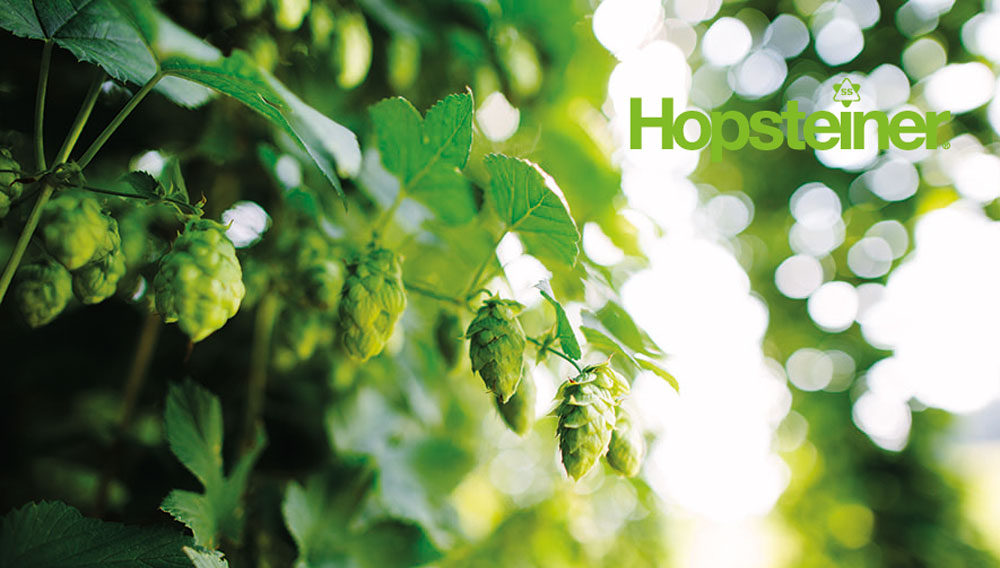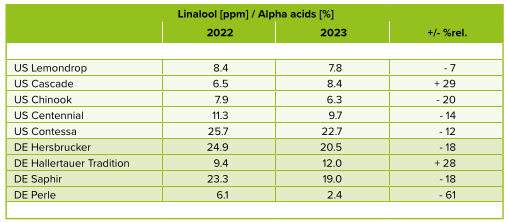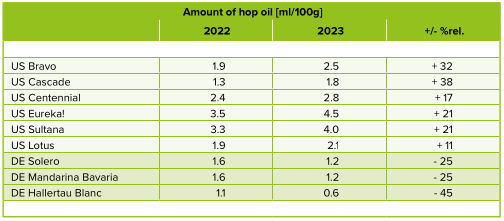Variations in hop aroma depending on crop year
Technical support | As usual at the turn of the year, we’d like to share some averaged data on the recent and previous crop year’s composition of aroma substances of some selected hop varieties. This comparison is intended as a helpful indication to achieve consistent hop aroma in beer, especially when changing from one crop year to another.
Late hopping
Based on the addition of the same quantity of bitter substances towards the end of boil, the resulting late hop flavour might vary. Linalool is assessed as the key indicator for late hop aroma in beer. Hence, the ratio of linalool to alpha acids can be used to evaluate and adjust the aroma intensity (more info on this issue).
For the shown varieties often used in late hopping, fluctuations of hop aroma intensity by using crop 2023 pellets are hardly expected for US Lemondrop, Contessa and Centennial. The usage of Chinook might result in little less aroma at the same dosage rates, whereas Cascade will clearly contribute to more aroma intensity. Compared to 2022 the linalool input of the shown German aroma varieties is somehow similar for Hersbrucker and Saphir of crop 2023. The ratio for Hallertauer Tradition is about one third higher in 2023 so more aroma intensity can be expected. The ratio for Perle is almost two thirds lower, resulting in major hop dosage adjustments to match the same aroma if using the same hopping recipe.
Dry hopping
Figure 2 shows the hop oil content of some hop varieties that are often used for dry hopping.
Dry hopping is often based on the total amount of hop oils and not on single components. All shown US varieties have higher concentrations of hop oils for the recent crop year. In contrast to the US, the shown German varieties contain less hop oils. In case of Hallertau Blanc almost only the half of the previous crop. Hardly any variety shown is close to the 2022 values, so keep this in mind when crop 2022 is used up. The assessment of the crops is done on analytical basis of representative mixed samples from the respective growing region. For individual batches, the assessments described may vary. If you would like to know more about the current data of your hop varieties, please do not hesitate to contact us.




